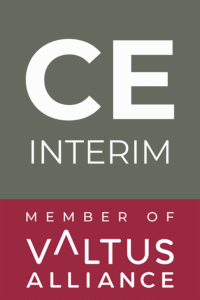Not enough time to read the full article? Listen to the summary in 2 minutes.
Navigating the complexities of post-merger integration (PMI) requires careful planning, strategic execution, and effective management practices to ensure a smooth transition and maximize synergies. Implementing Post-Merger Integration Best Practices can significantly enhance the success of the integration process, while understanding the roles and responsibilities involved is crucial for maintaining order and accountability.
Post-Merger Integration Best Practices
1) Effective Crisis Communication Strategies
Clear and timely communication is paramount during a merger or acquisition to address uncertainties, alleviate concerns, and maintain employee morale and stakeholder confidence. Best practices include:
- Proactive Communication: Establishing a communication plan that outlines key messages, channels, and timelines for sharing information with employees, customers, and other stakeholders.
- Transparency and Clarity: Providing honest and transparent updates about integration progress, challenges, and expected outcomes to build trust and mitigate rumors.
- Two-Way Communication: Encouraging open dialogue, feedback, and questions from stakeholders to address concerns promptly and foster a supportive environment.
2) Leveraging Interim Management Consulting Services
Interim management consultants play a pivotal role in facilitating successful PMIs by bringing specialized expertise, leadership, and operational guidance. Best practices include:
- Strategic Leadership: Engaging interim managers to provide strategic oversight, manage change, and align integration efforts with business objectives.
- Operational Excellence: Leveraging interim managers’ experience to optimize processes, streamline operations, and identify efficiencies during the integration phase.
- Cultural Integration: Supporting cultural alignment initiatives and fostering a unified organizational culture through effective leadership and communication.
Post-Merger Integration Checklist
1) Essential Tasks and Activities for Integration
a) Pre-Merger Planning
- Align Goals and Objectives of Merging Entities: Define strategic and operational priorities for the combined organization. Determine short-term and long-term goals to guide integration efforts. Example: If a technology company acquires a software startup, aligning on product integration timelines and customer retention goals is crucial.
- Conduct Thorough Due Diligence: Assess financial, legal, operational, and cultural aspects of both companies. Identify potential synergies and risks that could impact integration. Example: During due diligence, discovering a mismatch in IT infrastructure compatibility can prompt early planning for system integration challenges.
- Identify Key Stakeholders and Integration Teams: Form an Integration Management Office (IMO) comprising representatives from both companies. Assign clear roles and responsibilities to integration teams across functional areas (IT, HR, Finance, etc.). Example: Appointing a dedicated team to handle cultural integration ensures that employee concerns and expectations are effectively addressed.
b) Cultural Integration
- Assess and Plan for Cultural Integration: Evaluate cultural differences and similarities between the merging entities. Develop strategies to blend corporate cultures while preserving core values. Example: Conducting employee surveys and focus groups can provide insights into cultural nuances that affect workplace dynamics.
c) Legal and Compliance
- Ensure Regulatory Approvals and Compliance: Obtain necessary regulatory approvals and licenses for the merged entity. Ensure compliance with local, national, and international laws and regulations. Example: Hiring legal experts to review contracts and identify regulatory requirements ensures legal continuity and minimizes compliance risks.
- Integrate Legal Structures and Protect IPs: Consolidate legal entities and intellectual property rights (IPRs). Draft new agreements or amend existing ones to reflect changes in ownership and responsibilities. Example: Updating trademark registrations and patent filings to reflect the merged entity’s new brand identity and product offerings.
d) Financial Integration
- Consolidate Financial Operations and Systems: Integrate financial reporting systems and accounting practices. Streamline budgeting, forecasting, and financial analysis processes. Example: Implementing a unified ERP system enables real-time financial reporting and facilitates cross-functional collaboration on budget allocations.
- Plan for Synergy Realization: Identify synergies in cost savings, revenue growth, and operational efficiencies. Develop strategies to capture and measure synergies post-integration. Example: Combining sales teams to cross-sell products and services to a broader customer base, thereby increasing market penetration and revenue.
e) Operational Integration
- Merge Supply Chain and Operational Processes: Align procurement, production, and distribution processes. Optimize supply chain logistics to reduce costs and improve service levels. Example: Consolidating warehouse facilities and renegotiating vendor contracts to leverage economies of scale and reduce procurement costs.
- Integrate HR Policies and Systems: Harmonize employee benefits, payroll systems, and performance management practices. Foster a unified corporate culture through HR initiatives and leadership development programs. Example: Standardizing employee onboarding processes and performance evaluation criteria to promote consistency and fairness across the merged entity.
f) Strategy and Market Positioning
- Align Market Strategies of the Merged Entity: Define target markets, customer segments, and competitive positioning strategies. Develop marketing and sales strategies to capitalize on combined strengths. Example: Conducting market research to identify customer preferences and market trends that influence product development and sales strategies.
- Rationalize Product/Service Portfolio: Assess product/service offerings to eliminate duplication and optimize portfolio. Align product development and innovation strategies with market demand and customer expectations. Example: Phasing out low-margin products and investing resources in developing innovative solutions that address emerging market needs.
g) Customer and Stakeholder Management
- Maintain Customer Service Continuity: Ensure uninterrupted service delivery and customer support. Address customer inquiries and concerns promptly to maintain customer satisfaction. Example: Implementing a customer service hotline and online support portal to assist customers with inquiries and troubleshooting.
- Engage Stakeholders Throughout the Integration Process: Foster collaboration and partnership with key stakeholders (investors, suppliers, community leaders, etc.). Seek input and involvement in decision-making processes to build trust and alignment. Example: Hosting supplier summits and investor briefings to discuss partnership opportunities and strategic initiatives post-merger.
2) Monitoring and Evaluating Progress
a) Set Up KPIs for Integration Success
- Define Key Performance Indicators (KPIs): Aligned with integration goals and objectives, establish benchmarks to measure progress and success across functional areas. Example: Tracking KPIs such as customer retention rates, employee satisfaction scores, and financial performance metrics to gauge integration effectiveness.
b) Regularly Monitor Integration Progress
- Conduct Regular Assessments and Status Reviews: Monitor milestones, timelines, and budget adherence to identify potential risks and deviations. Example: Holding bi-weekly integration status meetings with department heads to review progress, address challenges, and adjust timelines as needed.
c) Adjust Integration Plans Based on Feedback
- Solicit Feedback from Stakeholders and Integration Teams: Implement corrective actions and adjustments to integration plans based on feedback and lessons learned. Example: Conducting post-mortem reviews after completing major integration phases to capture insights and improve future integration strategies.
Roles and Responsibilities in Post-Merger Integration
1) Key Players in Post-Merger Integration Management
- Executive Leadership Team: The top executives, including the CEO, CFO, and COO, play a critical role in setting the vision and strategic direction for the integration. They ensure alignment with the overall corporate strategy and maintain accountability for the integration’s success.
- Integration Management Office (IMO): This team oversees the entire integration process, coordinating efforts across various departments. The IMO ensures that integration activities are on track and aligned with strategic goals.
- Functional Leaders: Leaders from key functions such as finance, HR, IT, and operations are responsible for integrating their respective areas. They develop and execute detailed integration plans, ensuring smooth transitions and minimizing disruptions.
2) Responsibilities of Interim Managers and Executives
- Interim Managers: Interim managers, especially those from firms like CE Interim, bring specialized expertise in managing complex integrations. They can step into executive roles such as Chief Integration Officer or Program Management Officer, providing leadership and direction during the transition period.
- Executives: Existing executives must collaborate with interim managers to ensure continuity and leverage their deep knowledge of the company. They are responsible for maintaining day-to-day operations while supporting the integration process.
Post-Merger Integration Advisory
1) Importance of Advisory Boards and Consultants
- Advisory Boards: Comprising industry experts and experienced professionals, advisory boards provide strategic guidance and objective insights. They help navigate complex integration challenges, offering advice on best practices and potential pitfalls.
- Consultants: External consultants bring specialized skills and experience to the integration process. They offer critical support in areas such as change management, cultural integration, and operational optimization.
2) Support from CE Interim’s Global Talent Pool
CE Interim offers a global network of seasoned interim managers and consultants who provide invaluable support during post-merger integration. These experts bring a wealth of experience from diverse industries and geographies, helping to ensure a seamless integration process. They assist in areas such as:
- Strategic Planning: Developing comprehensive integration plans aligned with business goals.
- Operational Execution: Implementing integration activities across functions and ensuring coordination.
- Risk Management: Identifying and mitigating potential risks during the integration process.
- Change Management: Facilitating cultural integration and addressing employee concerns.
By leveraging CE Interim’s global talent pool, companies can access the expertise needed to navigate the complexities of post-merger integration and achieve long-term success.
Conclusion
Best practices and clearly defined roles and responsibilities are essential for the success of post-merger integration. Implementing effective crisis communication strategies, leveraging interim management consulting services, and following a comprehensive integration checklist can significantly enhance the integration process.
Understanding the key players and their responsibilities, along with the support from advisory boards and consultants, further ensures a smooth and successful transition, ultimately leading to long-term growth and stability for the merged entity.





